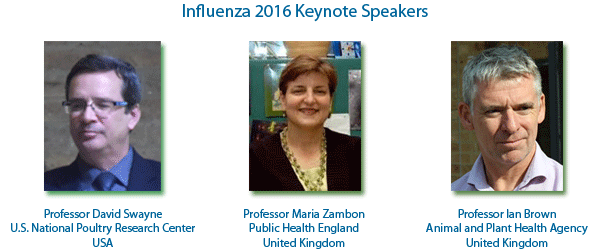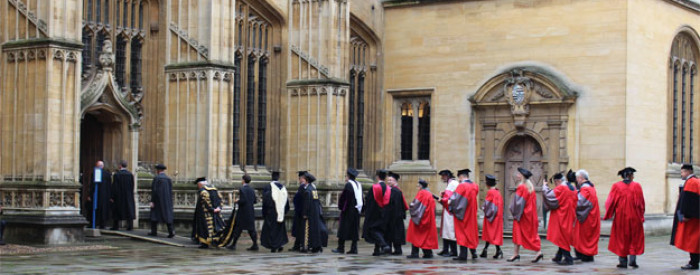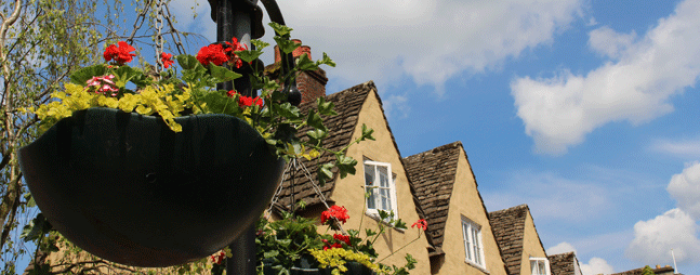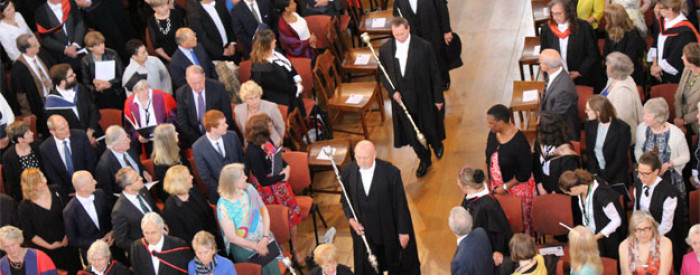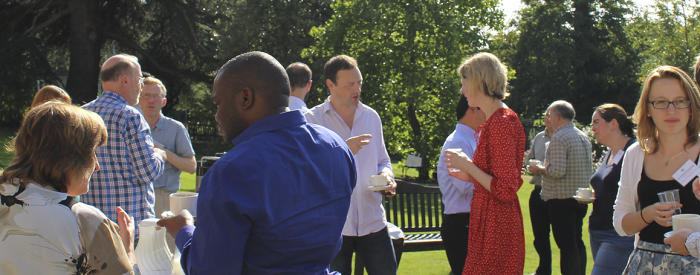Welcome to the Influenza Conference
The conference featured:
o Emerging and cutting-edge topics addressing most aspects of basic and applied research on zoonotic and human influenza viruses
o Keynote addresses by world leaders in the field of influenza
o Distinguished international faculty comprising senior and junior scientists
o Global participation by scientists from academia, industry and government organisation
o Excellent networking opportunities
General areas of influenza research covered:-
o Molecular and structural virology
o Immunology and vaccination
o Host-pathogen interaction – virulence and pathogenecity
o Epidemiology and evolution
o National and international surveillance and contingency strategies
o Advances in viral detection and identification technologies
Speakers & Agenda
Day 1: 13th September 2016
Session 1: Public Health, Vaccinology and Immunology
1430 Professor Maria Zambon, Public Health England, UK (Keynote Speaker)
Seasonal Influenza vaccines: New vaccines, new challenges
1515 Professor John Oxford, Queen Mary College London and Oxford Media & Medicine, UK
The Enigmatic Virus of the Great Pandemic 1916-1924
1545 Professor Rebecca Cox, University of Bergen, Norway
The rapidity and longevity of the immune response after live attenuated influenza vaccination in children
1615 Refreshment break
1645 Professor Alain Townsend, University of Oxford, UK
Human Monoclonal Antibodies and the Evolution of Seasonal Influenza – “Deja Flu”
1715 Professor James Stewart, University of Liverpool, UK
BPIFA1/SPLUNC1 restricts Influenza A virus infection in the host by influencing the adaptive immune response
1745 Professor Bernadette Dutia, University of Edinburgh, UK
The impact of macrophage phenotype on the immune response to influenza virus infection
1815 Miss Pramila Rijal, University of Oxford, UK
Broadly Cross-protective Human Monoclonal Antibodies to Neuraminidase
1835 Close of Day 1
Day 2: 14th September 2016
Session 2: Molecular Virology – 1
0900 Dr Craig Thompson, University of Oxford, UK
A site of limited variability within the head of H1 haemagglutinin drives the antigenic evolution of H1N1 seasonal influenza
0930 Dr Aartjan te Velthuis, University of Oxford, UK
The initiation of influenza A virus RNA synthesis
1000 Professor Jan Rehwinkel, University of Oxford, UK
Induction of type I interferon in IAV-infected cells
1030 Refreshment break
Session 3: Pathogenecity
1110 Professor David Swayne, USDA/Agricultural Research Service, USA
(Keynote Speaker)
Impact of Species Adaptation on Global Spread of Clade 2.3.4.4 H5Nx Highly Pathogenic Avian Influenza
1200 Dr Ruth Bouwstra, GD Animal Health, The Netherlands
Risk analysis for low pathogenic avian influenza virus infections on Dutch poultry farms, 2007-2013
1220 Dr El-Sayed AbdelWhab, Friedrich-Loeffler-Institut, Germany
Eurasian H7N7 Avian Influenza Viruses Exhibit Variable Pathogenicity in Chickens after Acquisition of Different Polybasic Proteolytic Cleavage Motifs
1240 Lunch break
Session 4: Avian Virology, Evolution and Epidemiology
1400 Professor Ian Brown, Animal and Plant Health Agency, UK (Keynote Speaker)
Avian influenza, increasing threat or not?
1445 Dr Marek Slomka, Animal and Plant Health Agency, UK
Outbreak of H7N7 HPAI in chicken layers in the UK in 2015: scientific experiences
1515 Dr Jose Gonzales, Central Veterinary Institute of WUR, The Netherlands
Avian influenza virus shedding from infected poultry: a systematic review and meta-analysis
1535 Dr El-Sayed AbdelWhab, Friedrich-Loeffler-Institut, Germany
Towards a Better Understanding of the Evolution of Endemic A/H5N1 at the Poultry-Human Interface in Egypt
1555 Refreshment Break
1600 Mr Mahmoud Naguib, Friedrich Loeffler Institute, Germany
Egyptian avian influenza viruses H9N2 reveal distinct genetic and antigenic properties
Session 5: Molecular Virology – 2
1620 Professor Dr Martin Schwemmle, University Medical Center Freiburg, Germany
Reverse genetic analysis of the newly discovered bat influenza A-like viruses
1650 Dr Beatrice Nal, Brunel University London, UK
Mechanisms of restriction of influenza A virus by host factors
1720 Miss Joyce Jones, Center for Disease Control and Prevention, USA
Antigenic drift among cluster IV-A and IV-B swine-origin influenza A(H3N2) variant viruses in the United States
1750 Close of Day 2
1900 Networking Dinner (by prior booking or invitation)
Day 3: 15th September 2016
Session 6: Laboratory Models, Technologies, bioinformatics
0900 Dr Simon Scott, University of Kent, UK
Optimising generation of viral pseudotypes for influenza serological investigation
0920 Professor Dr Timm Harder, Friedrich-Loeffler-Institut, Germany
“Fits like a glove” – Real time RT-PCR as a universal tool in animal influenza diagnosis
0950 Dr Anthony Marriott, Public Health England, UK
Ferret and non-human primate challenge studies with human influenza viruses
1020 Dr Kerstin Skovgaard, Technical University Denmark, Denmark
Transcriptional studies in the pig as a valuable animal model for influenza virus infection
1040 Refreshment Break
1110 Dr Nigel Temperton, University of Kent, UK
Exploiting viral pseudotypes for influenza vaccine research
1130 Miss Christine Eng, National University of Singapore, Singapore
Reassortment simulation with machine learning prediction demonstrate increasing zoonotic potential of avian influenza A viruses
1150 Miss Malene Andersen, Technical University of Denmark, Denmark
Molecular characterisation and assessment of the zoonotic potential of a novel H1N2 influenza virus generated by reverse genetics
1210 Close of Conference
Accepted posters
(Presenters in Bold)
If your abstract has been accepted for presentation but it does not appear in the list below, please let us know as soon as possible by email on FluOxford@gmail.com.
Membrane biophysical properties of influenza viruses in virus infectivity
Stephen P Dunham, Cyril Rauch, Lamyaa Al-Dalawi
School of Veterinary Medicine and Science, University of Sutton Bonington Campus, Nottingham, College Road LE12 5RD
The influenza virus is an enveloped virus possessing a lipid envelope derived from the host cell membrane. It uses a cellular lipid and lipid signal mechanism for entry into the host cell; in addition, lipids play a role in the late stage of the virus lifecycle, assembly and budding. The main purpose of this study is to investigate the molecular and biophysical importance of these lipids in terms of infectivity by pre-treating avian influenza virus…
Codon and clade specific positive selection acting on mammalian Interferon-Induced Transmembrane Proteins
Camilla T O Benfield1, Sarah E Smith2,7, Edward Wright4, Nigel J Temperton5, Boon H Teo1, Paul Kellam2,3,7, Edward C Holmes 6
1 Department of Pathology and Pathogen Biology, The Royal Veterinary College, Hatfield, UK
2 Previous address: The Wellcome Trust Sanger Institute,
The Wellcome Trust Genome Campus, Hinxton, Cambridge, UK
3 Imperial College London, UK
4 Viral Pseudotype Unit (Fitzrovia), Faculty of Science and Technology, University of Westminster, London, UK
5 Viral Pseudotype Unit (Medway), School of Pharmacy, University of Kent, Chatham Maritime, Kent, UK
6 Marie Bashir Institute for Infectious Diseases & Biosecurity, Charles Perkins Centre, School of Biological Sciences and Sydney Medical School, The University of Sydney, Australia
7 Kymab Ltd, Babraham Research Campus, Cambridge, UK
Human and mouse IFITM3 reduce influenza induced morbidity and mortality, and belong to the family of Interferon-induced Transmembrane proteins (IFITMs), host antiviral restriction factors which possess broad-spectrum antiviral activity. We recently reported that IFITM3 from the microbat Myotis myotis is also an endosomal restriction factor which inhibits cell entry by a range of zoonotic viruses including all influenza A virus subtypes tested…
Enhanced early warning systems for notifiable avian disease and the detection of two incursions of LPAI in poultry in the UK
Scott M. Reid1, Jane Clark1, Alejandro Núñez2, Amanda Seekings1, Marek J. Slomka1, Sahar Mahmood1, Jill Banks1, Sharon M. Brookes1, Ian H. Brown1
1 Department of Virology, Animal and Plant Health Agency-Weybridge, Woodham Lane, New Haw, Addlestone, Surrey, KT15 3NB, United Kingdom
2 Department of Pathology, Animal and Plant Health Agency-Weybridge, Woodham Lane, New Haw, Addlestone, Surrey, KT15 3NB, United Kingdom
Avian influenza (AI) viruses are primarily of low pathogenicity (LP) with a natural reservoir in wild birds. These viruses, which include notifiable H5 and H7 viruses of low pathogenicity, cause mild clinical signs in poultry. The notifiable avian disease (NAD) ‘testing to exclude’ (TTE) scheme was launched by the Animal and Plant Health Agency in 2014 to enable Veterinary Surgeons to carry out AI (and Newcastle Disease) differential diagnosis…
Influenza virus sensitivity to interferon-induced antiviral state depends on pH optimum of hemagglutinin-mediated membrane fusion
Thomas Gerlach1, Luca Hensen1, Tatyana Matrosovich1, Janina Wolf1, Michael Winkler2, Friedemann Weber3, Hans-Dieter Klenk1, Stefan Pöhlmann2, Mikhail Matrosovich1
1 Institute of Virology, Philipps University, Marburg, Germany
2 DPZ, Göttingen, Germany
3 Institute of Virology, Justus-Liebig University, Gießen, Germany
Replication and pathogenicity of influenza viruses critically depend on their ability to tolerate the type I interferon (IFN) antiviral response, however, role of different viral proteins in IFN evasion is not fully defined. Here we studied the role of viral hemagglutinin (HA) using 2:6 PR8-based recombinant viruses with HAs and NAs of representative avian, zoonotic and human viruses. Analyses of infection inhibition in…
Human annexin A6-dependent down regulation of M2 is responsible for restriction of influenza A virus morphogenesis
Maria J. Ramos1, Stefan D. Gaisenband1, Ashley Howkins2, Alan Reynolds2, Béatrice Nal1
1 Virus-Host Interactions Lab, Division of Biosciences, Department of Life Sciences, College of Health and Life Sciences, Brunel University London, Uxbridge UB8 3PH, UK
2 Experimental Techniques Centre, Brunel University London, Uxbridge UB8 3PH, UK
Despite enormous progress in influenza related research, major host-pathogen interactions regulating influenza A virus (IAV) life cycle still remain poorly understood. Influenza’s integral membrane protein M2 is an essential protein for the virus. M2 proton channel activity is involved in virus uncoating at early stages and inhibition of premature activation of haemagglutinin (HA) envelope protein during its transport to the plasma membrane at later stages. M2 is implicated in membrane curvature at the neck of budding virions, scission and release of progeny viral particles…
Molecular characterization of field and chicken-passaged H9N2 AIV isolates
Edyta Świętoń, Monika Olszewska-Tomczyk, Zenon Minta, Krzysztof Śmietanka
Department of Poultry Diseases, National Veterinary Research Institute, Puławy, Poland
The aim of the present study was molecular characterization of H9N2 avian influenza isolates from field outbreaks in turkeys in Poland during 2013-2014, and the analysis of mutations emerging in the genome of H9N2 isolate from the index case following experimental passages in chickens. Three H9N2 isolates (one from 2013 and two from 2014) were subjected to Sanger sequencing in order to obtain full gene segments or their substantial portions…
Therapeutic administration of broadly neutralising FI6 antibody in pig influenza virus infection
Sophie Morgan1, Hanneke Hemmink1, Barbara Holzer1, Francisco J. Salguero2, Emily Porter3, Gloria Agatic4, Elisabetta Cameroni4, Bryan Charleston1, Davide Corti4, Elma Tchilian1
1 The Pirbright Institute, Woking, Surrey GU24 0NF, UK
2 School of Veterinary Medicine, University of Surrey, Guilford, UK
3 School of Veterinary Sciences, University of Bristol, Langford, UK
4 Humabs BioMed SA, Bellinzona, Switzerland
Influenza A virus is an important zoonotic pathogen that can cause substantial mortality and rapidly disseminate through human and swine populations. Broadly neutralising antibodies against Influenza A viruses (IAV) are a potential therapy and important for vaccine design. FI6 is the first example of a neutralising monoclonal antibody against all IAV, recognizes the hemagglutinin (HA) of all 16 subtypes and neutralizes both group 1 and 2 IAV. Passive transfer of FI6 confers protection to mice and ferrets…

